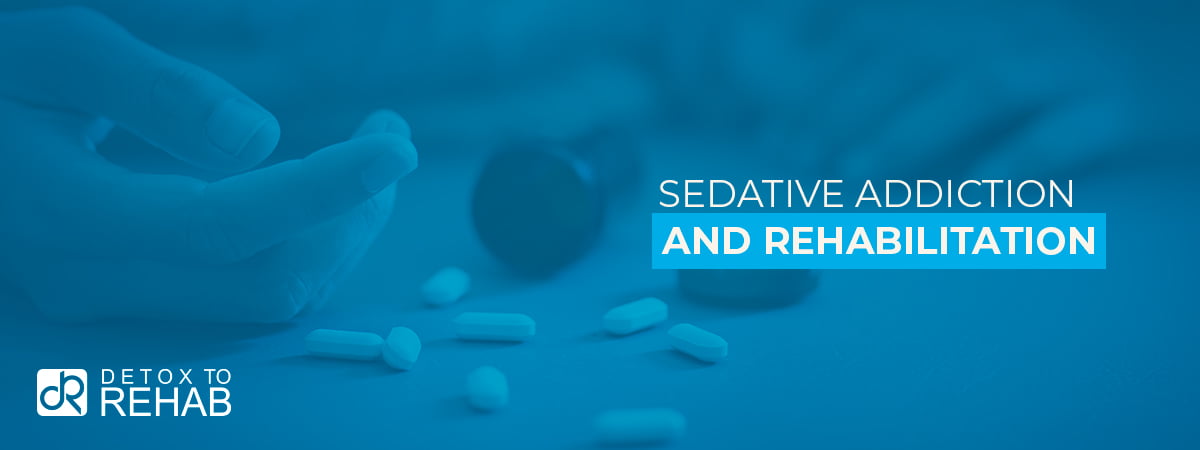

Sedatives are meant to bring calm — but for many, they become a source of chaos. Whether prescribed for anxiety, insomnia, or stress, these drugs can quietly lead to dependence and destruction. Sedative addiction is one of the most underestimated health crises in America today, with millions struggling to stop taking pills that once promised peace. According to the National Institute on Drug Abuse (NIDA), over 30 million Americans misuse prescription sedatives each year, and many don’t realize they’re addicted until withdrawal sets in — often with life-threatening symptoms.
What makes sedatives especially dangerous is their ability to alter brain chemistry, slowing down vital functions like breathing and heart rate. When abused, they can cause overdose, coma, or even death. Sedative abuse treatment is not just about breaking a habit — it’s about saving lives.
Street names for sedatives include “downers,” “sleepers,” “tranqs,” “chill pills,” and “benzos.”
“Addiction is a disease of isolation — recovery is a journey of connection.” — Unknown
This guide explains the symptoms, risks, and treatments for sedative addiction, and offers hope for recovery.
What Are Sedatives?
Sedatives are a broad class of drugs that slow down the central nervous system (CNS), reducing anxiety, inducing sleep, and relaxing muscles. Doctors often prescribe them to treat conditions such as panic disorder, insomnia, and seizure disorders.
Common types of sedatives include:
- Benzodiazepines: Xanax, Valium, Ativan, Klonopin
- Barbiturates: Phenobarbital, Amytal, Seconal
- Non-benzodiazepine sleep aids (“Z-drugs”): Ambien, Lunesta, Sonata
- Muscle relaxants and tranquilizers: Soma, Librium
These drugs are effective when used as directed, but even short-term misuse can lead to dependency. Many sedatives affect GABA receptors, a neurotransmitter responsible for calming the brain. Over time, the brain adapts, reducing natural GABA production and making users dependent on the drug just to feel “normal.”
How Sedative Addiction Develops
Addiction to sedatives often starts innocently. A person may take their prescribed medication for sleep or anxiety, but over time, tolerance builds. They may increase the dose or take it more frequently without realizing their body is becoming dependent.
Sedative addiction is both physical and psychological. Physically, the body craves the drug to function. Psychologically, users begin to rely on it to cope with stress, fear, or sadness. What begins as a nightly sleep aid can quickly spiral into daytime use — and eventually, complete dependency.
Warning signs of sedative addiction include:
- Taking higher doses than prescribed
- Combining sedatives with alcohol or opioids
- Doctor shopping or buying pills illegally
- Memory loss, confusion, or slurred speech
- Anxiety, irritability, or insomnia when not using
- Neglecting work, school, or family obligations
According to SAMHSA, emergency room visits related to sedative abuse have doubled since 2005, and many involve dangerous combinations with alcohol or opioids. This “poly-drug use” greatly increases the risk of overdose.
The Dangers and Health Risks of Sedative Abuse
Sedatives can feel deceptively safe because they’re often prescribed by doctors. But when abused, they can cause devastating physical and mental harm.
Short-term effects of sedative abuse include:
- Drowsiness and dizziness
- Impaired coordination and slowed reflexes
- Memory problems or blackouts
- Reduced breathing rate
- Euphoria followed by depression or fatigue
Long-term effects of sedative addiction include:
- Liver and kidney damage
- Severe depression or anxiety
- Sleep disturbances
- Cognitive decline and memory loss
- Dependence and dangerous withdrawal
- Overdose and death
The Centers for Disease Control and Prevention (CDC) reports that sedatives are involved in nearly 12% of fatal drug overdoses annually in the United States — often due to respiratory failure or heart suppression. Mixing sedatives with opioids or alcohol is particularly deadly, as both depress the central nervous system.
Sedative Abuse Treatment and Recovery
Overcoming sedative addiction is possible — but it requires medical support. Withdrawal from sedatives, especially barbiturates or benzodiazepines, can be life-threatening if not managed properly. Stopping “cold turkey” may cause seizures, delirium, or cardiac arrest.
That’s why sedative abuse treatment typically begins with a medically supervised detox. In a clinical setting, doctors taper the dose gradually to reduce withdrawal risks while monitoring vital signs.
Common withdrawal symptoms include:
- Anxiety, panic attacks, and restlessness
- Insomnia and nightmares
- Muscle tremors and sweating
- Nausea or vomiting
- Hallucinations and seizures (in severe cases)
After detox, patients transition into therapy to address the root causes of addiction.
Effective sedative abuse treatment options include:
- Inpatient rehab: 24-hour care and structured support in a safe environment
- Outpatient programs: Flexible therapy schedules for continued treatment
- Cognitive Behavioral Therapy (CBT): Helps identify triggers and negative thought patterns
- Dialectical Behavior Therapy (DBT): Focuses on emotional regulation and relapse prevention
- Holistic approaches: Yoga, meditation, and nutrition therapy to support overall well-being
According to NIDA, individuals who participate in both detox and therapy are 60% more likely to maintain sobriety long-term compared to those who only complete detox.
Recovery also requires building a new relationship with sleep and relaxation. Through therapy and support groups like Narcotics Anonymous (NA) or SMART Recovery, individuals learn healthier ways to manage stress, anxiety, and emotional pain.
True Stories of Addiction: Finding Hope
At Detox to Rehab, we believe in the healing power of real stories. Our True Stories of Addiction series showcases people who once felt hopeless — but found their way back to life and purpose.
Hearing others’ experiences can inspire hope and remind us that recovery is possible, no matter how deep the struggle runs.
Take the First Step Toward Healing
Sedative addiction doesn’t have to define you. Whether you started taking pills to sleep, relax, or escape stress, there’s a path to freedom waiting for you.
“It’s never too late to be what you might have been.” — George Eliot
If you or a loved one is struggling with sedative dependency, help is just a call away. Search our treatment directory or call our confidential 24/7 helpline at (866) 578-7471 to connect with compassionate professionals who can guide you toward safe detox and recovery programs.
The road to recovery begins with one step — and that step can start today.








